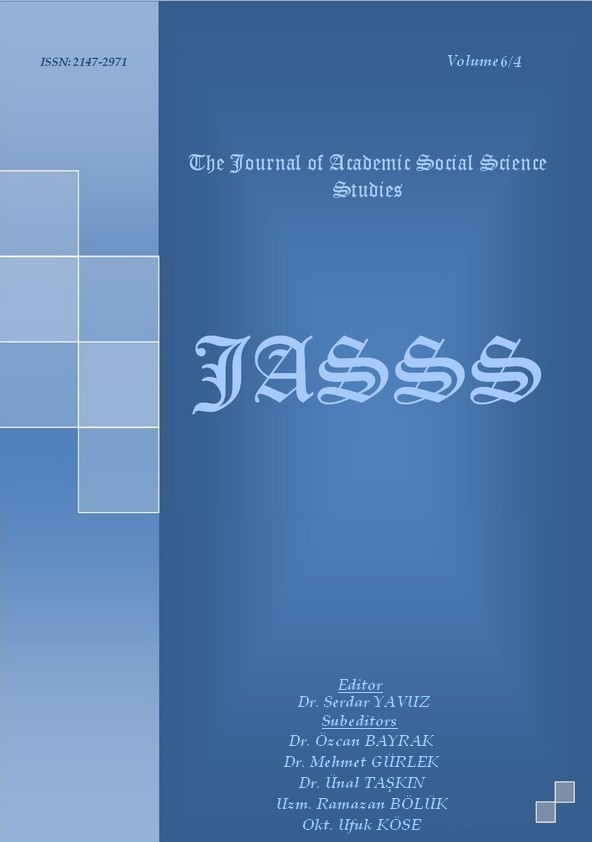Author :
Abstract
İcadından günümüze uzanan süreçte, sinema sanatının gelişiminde sinematografik ögelerin filmsel çevre ve mekan ile kurduğu ilişkiler önemli rol oynamıştır. Yönetmenin bu ilişkileri doğru çözümleyip filmlerine yansıtabilme yetkinliği, aynı zamanda film estetiğinin de konuları arasındadır. Sinemanın dış dünyanın gerçekliğini iki boyutlu perdede fotoğrafik olarak yinelemekten ibaret bir panayır eğlencesi olmaktan çıkıp, kendine özgü bir dil kurması ve modern zamanların sanatı haline gelmesinde de belirleyici olan bu ilişkiler bütünü içinde, filmsel çevre ve mekanlar dramatik yapının merkezinde yer almıştır. Filmlerin öyküleri ve karakterleri, bu kurmaca dünya içindeki çevre ve mekanlar içinde seyirci ile buluşurlar, inandırıcı bir biçimde seyirciyi de o atmosfer içinde yaşatırlar. Özellikle klasik anlatı sineması için geçerli olan bu işleyiş içinde, kimi zaman stüdyolarda kurulan yapay mekanlarda (dekor), bazen de gerçek mekanlarda kurgulanan setlerde filmsel anlatı görselleştirilir. Gerek anlatının kendisi gerekse anlatı içindeki karakterlerin özellikleri ve çevreleriyle ilişkileri, bu mekanlar ve bunların çerçeve dışında kalan kısmıyla bir bütün haline gelmiş hali olan filmsel çevre içinde “gerçek”leşir. Bu bakış açısıyla Türk sinemasında üretilen filmler incelendiğinde ilk yıllardan 1970’lere kadar geçen zaman dilimi içinde filmsel mekan ve çevre konusunda yönetmenlerin yukarıda belirtilen farkındalığı filmlerine belirgin biçimde yansıttıkları söylenemez. Bu yıllarda çekilen filmlerin çoğunda filmsel çevre ve mekan, filmin hikayesine fon olmaktan öteye gidememiş, hatta bazı yerlerde dekor izlenimi vererek inandırıcılığını da kaybetmiştir. Bunda Türk sinemasına özgü teknik, ekonomik ve estetik sorunların da önemli payı vardır. 1950 sonrası sinemaya giren Metin Erksan’ın filmlerine bakıldığında ise bu konuda daha özgün ve başarılı bir yaklaşımın izlerini görmek mümkündür. Sanat tarihi ve estetik konusunda belirli bir birikimi olan yönetmenin özellikle siyah beyaz çektiği filmlerinde çevre ve mekanı filmsel anlatıya fon olarak kullanmak yerine, diğer sinematografik ögelerle anlamlı ilişkiler içinde ve “estetik biçim”lerde yansıttığı görülebilir.
Keywords
Abstract
The relationships that cinematographic components associated with setting and location have played an important role in the development of cinema during the process since its invention. Director’s competence of correctly decoding and reflecting these relationships to his movies is also among the subjects of film aesthetics. Cinematic setting and locations have been in the centre of this dramatic structure in these relations’ integrity, which is determinative of the development of cinema into the art of modern times and founding a language of its own after going out of being an entertainment in fairs that photographically repeats the reality of outer world on 2D screens. Stories and characters of movies meet the audience in the setting and locations of this fictional world and they convincingly get the audience to live in that atmosphere. Particularly, in this action, which is valid for classical narrative cinema, sometimes in artificial locations (decor) constructed in studios and sometimes in movie sets fictionalised in authentic locations cinematic narration is visualised. Both the narration itself and the characters’ characteristics and relationships with their surroundings ‘become true’ in an cinematic setting that develops into an integrity with these locations and these locations’ parts that stay outside the frame. When we look over the movies produced in Turkish cinema through this aspect of view, it can not be said that directors had distinctly reflected the awareness about setting and location mentioned above throughout the time period from its first years to 1970s. In most of the movies filmed in those years, cinematic setting and location could not go beyond more than being a background for the story of the movie, yet more in some movies they strained credibility because of leaving impressions of decor. Technical, economical and aesthtetical problems peculiar to Turkish cinema have an important share in this situation. When we study the movies of Metin Erksan, who entered the cinema business after1950, it is possible to see that there are signs of a distinct and successful approach in this regard. It is noticeable that the director, who has a certain amount of knowledge about history of art and aesthetics, prefers reflecting the setting and location, especially in his black and white movies, with other cinematographic components significantly and in ‘aesthetic forms’ instead of using them as a background for cinematic narration.
